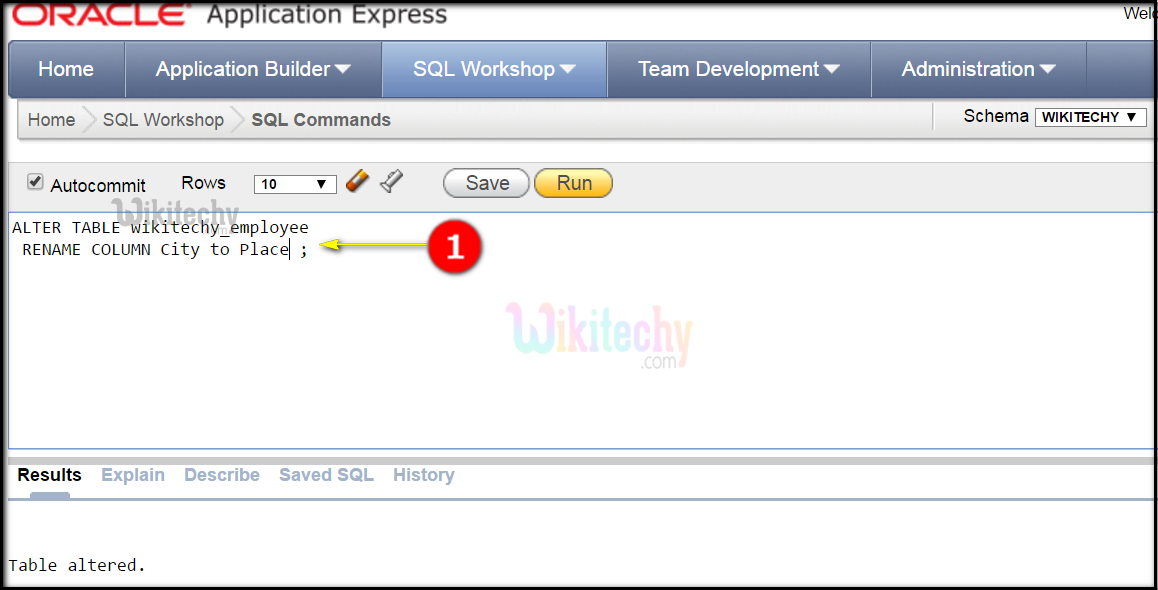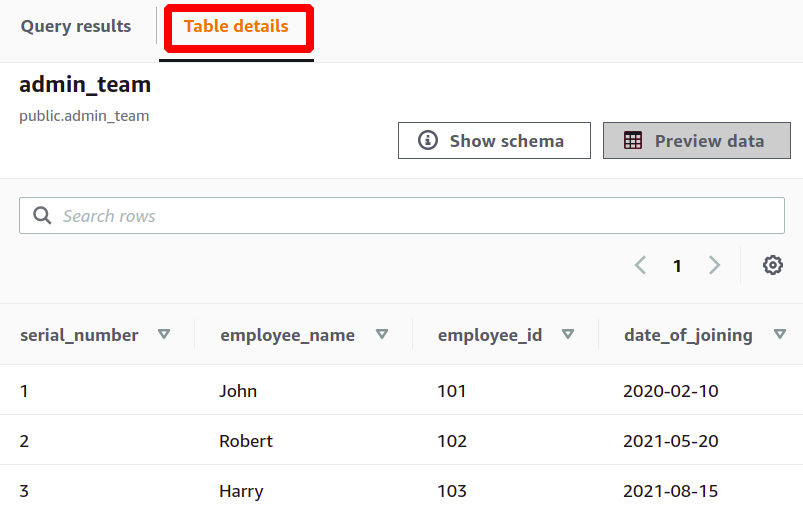

- #REDSHIFT ALTER TABLE RENAME TAKES FOREVER CODE#
- #REDSHIFT ALTER TABLE RENAME TAKES FOREVER WINDOWS#
When you need to stream messages from the message queue which supports streaming into Redshift in real-time. When you need to stream updates from the database which supports Change Data Capture (CDC) into Redshift in real-time. The flow automatically generates the COPY command and MERGEs data into the destination. When you need to bulk-load files that already exist in S3 without applying any transformations. When you need to extract data from any source, transform it and load it into Redshift. It is recommended that you use Redshift-optimized Flow to ETL data in Redshift. It is, however, important to understand that inserting data into Redshift row by row can be painfully slow. Therefore, you can use the same techniques you would normally use to work with relational databases in Etlworks Integrator.
#REDSHIFT ALTER TABLE RENAME TAKES FOREVER WINDOWS#
In the Database Explorer ( View | Tool Windows | Database Explorer), select any database objects and drag them to your code.Redshift is a column-based relational database.
#REDSHIFT ALTER TABLE RENAME TAKES FOREVER CODE#
Productivity tips Drag column names to your code Position a cursor between two columns, so it changes to the resize mode. In the list of supported languages, select the language that you want to inject. To inject a language for the whole column, right-click the corresponding header cell, and select Set Highlighting Language. So, when you have a piece of code inside the cell that belongs to the column, you can use code generation, code completion, and other IDE features. You can assign HTML, CSS, XML, RegExp, or any other formal language for the whole column. As a result, the data becomes unsorted, the columns appear in the order they were defined initially, and all the columns are shown. Reset the table view to the initial stateĬlick the settings icon ( ) and select Reset View. The Structure tool window displays all columns. You can review the whole table structure in the Structure tool window ( View | Tool Windows | Structure). Select the hidden column (a strikethrough column name) and press Space. Right-click any of the cells in the header row and select Columns List. To search through the column list, just start typing a column name in the Columns List window. In the Columns List window, select a column name and press Space. To hide a column, right-click the corresponding header cell and select Hide column.Īlternatively, you can right-click any of the cells in the header row and select Columns List Ctrl+F12. To reorder columns, use dragging for the corresponding cells in the header row. For example, the Auto Increment checkbox is only available for SQLite, MySQL, and other vendors that allow it for a primary key column of an integer data type.

In the Modify dialog, specify object settings that you need.Ĭolumn settings depend on the database vendor. Modify database-specific parameters of a column For example, by using this dialog in PostgreSQL, you can add and edit column check constraints. The IDE generates fields for the Modify dialog automatically according to the properties received during the introspection. Starting with DataGrip 2022.1, you can change database-specific parameters of a column. In the Modify dialog, specify the column settings that you need. In the Database Explorer ( View | Tool Windows | Database Explorer), right-click a column and select Modify Column. The Modify action recreates a table without the deleted column. In the Modify dialog, select the column that you want to delete and click the Remove button ( ). To delete a column in SQLite, right-click a table and select Modify Table. For more information about ALTER TABLE in SQLite, see the official SQLite documentation. In SQLite, you can rename a table, rename a column within a table, add a new column to an existing table. SQLite supports a limited subset of ALTER TABLE commands. Right-click a table and select New | Column. You can see a reference on node and object icons in the Icons for data sources and their elements chapter of Database Explorer topic.įor the table column icons, refer to Possible icon combinations for columns. Some relational database systems allow columns to include more complex data types like whole documents, images, or video clips.Ĭolumns can be seen in the Database Explorer.

A column may include text, numbers, or pointers to files in the operating system. A column is a piece of data that is stored by a table.


 0 kommentar(er)
0 kommentar(er)
